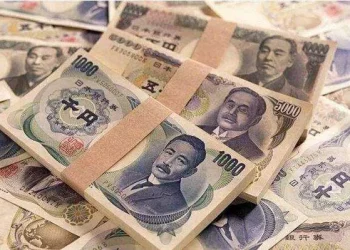The Japanese Yen (JPY) stabilized after initial gains were pared, driven by heightened anticipation of a significant Federal Reserve (Fed) rate cut announcement this Wednesday. Market attention is now turning to the Bank of Japan‘s (BoJ) upcoming policy decision on Friday, with expectations leaning towards maintaining current rates while leaving room for potential future hikes.
Japan’s Merchandise Trade Balance showed a larger deficit of ¥695.30 billion for August, up from ¥628.70 billion in July. This figure fell short of the market’s anticipated shortfall of ¥1,380.0 billion. Exports grew by 5.6% year-over-year, continuing a nine-month streak of growth but lagging behind the expected 10.0%. Imports increased by 2.3%, the slowest rate in five months, and missed the forecasted 13.4% rise.
The US Dollar (USD) remains under pressure due to expectations of a substantial 50 basis point rate cut by the Federal Open Market Committee (FOMC) on Wednesday. According to the CME FedWatch Tool, the probability of a 50-basis-point cut has risen to 67.0%, up from 62.0% the previous day, compared to a 33.0% chance for a 25-basis-point cut.
Japanese Finance Minister Shunichi Suzuki voiced concerns on Tuesday about the volatility in foreign exchange rates, stressing the government’s intent to monitor the effects of such fluctuations on the economy and public welfare. The government plans to respond to a stronger Yen as needed.
Rabobank economists Jane Foley and Molly Schwartz noted that JPY net long positions are at their highest since October 2016. Although a rate hike by the BoJ is not anticipated at its September 20 meeting, market participants will be watching for indications that the October meeting might be more eventful.
Commerzbank FX analyst Volkmar Baur expects the BoJ to hold steady this week, suggesting that Fed actions will more significantly influence the USD/JPY pair. Baur predicts a possible decline of the JPY below 140.00 per USD, even if the BoJ does not raise rates.
Fitch Ratings, in its latest report, forecasts that the BoJ might increase rates to 0.5% by the end of 2024, to 0.75% in 2025, and to 1.0% by the end of 2026.
The University of Michigan’s Consumer Sentiment Index rose to 69.0 in September, surpassing the expected 68.0 and reaching a four-month high. This increase reflects an improved consumer outlook on the US economy.
Hawkish BoJ policymaker Naoki Tamura has suggested that the central bank should consider raising interest rates to at least 1% by the latter half of the next fiscal year, underscoring a commitment to monetary tightening.
The US Producer Price Index (PPI) rose by 0.2% month-on-month in August, exceeding the forecasted 0.1% increase and the previous month’s 0.0% change. Core PPI also accelerated to 0.3% MoM, surpassing the expected 0.2% rise and July’s 0.2% decline.
Technical Analysis: The USD/JPY pair is trading around 141.40 on Wednesday, showing a downward trend within a descending channel. The 14-day Relative Strength Index (RSI) has risen above 30, indicating potential for a short-term upward correction. Immediate support is seen at 139.58, the lowest level since June 2023, followed by the lower boundary of the descending channel at 138.20. On the upside, resistance may be encountered at the nine-day EMA near 142.14, and the 21-day EMA around 143.72. A break above these levels could weaken bearish sentiment and test the upper boundary of the channel at 145.10.
Related Topics:

























